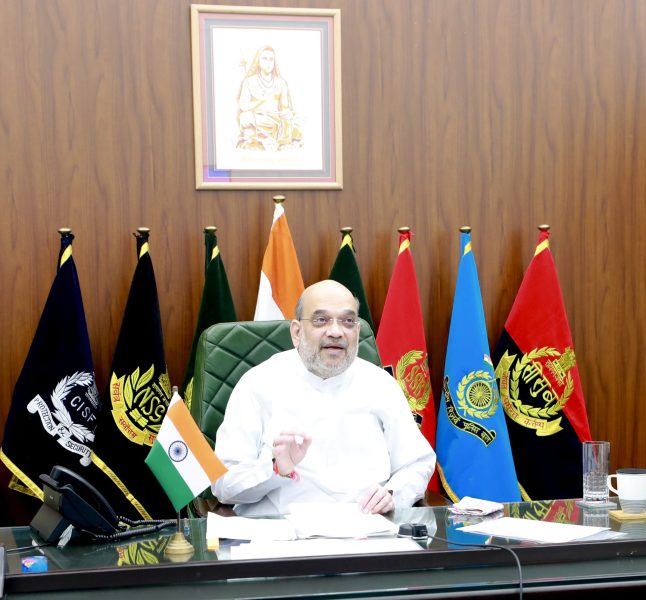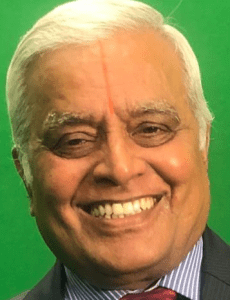
Poll badshah Amit Shah draws micro-detailed 2024 blueprint for BJP leaders
Tells party colleagues that winning the next Lok Sabha election with convincing margin is crucial not only for the BJP, but also for its ideology

As the 2024 Parliament election inches closer and the Opposition shows signs of allying and putting up a spirited fight, the BJP is rolling up its sleeves and plunging into action. Last week, Union Home Minister and BJP’s maverick election strategist, Amit Shah, pulled up eight Union Ministers for not meeting the expectations of the central leadership and contributing to preparations for the next Lok Sabha election.
Shah, chairing a high-powered meeting of senior partymen and ministers on September 6 at the BJP headquarters in Delhi, set a target — the party would at least try to level, if not exceed, the 303 seats it won in the 2019 parliamentary election. He is believed to have threatened the erring ministers that they either make immediate amends or lose their ministerial responsibilities.
BJP chief JP Nadda had earlier taken up the issue with Shah and sought his help in ensuring that the ministers start visiting the 85 parliamentary constituencies across six states, identified as ‘vulnerable’ by the party.
Also read: Gadkari overplayed RSS clout, may face fate of BJP’s old guards
Shah was reviewing the progress made by the party on the first phase of a plan set in motion by BL Santosh, the organising secretary of the party, a few months ago. Santosh reportedly pointed out that the election preparations were satisfactory in most states except Madhya Pradesh and Rajasthan.
Sharing duties
Drafting senior Union Ministers Union Minister Nirmala Sitharaman, Jyotiraditya Scindia and Narendra Singh Tomar for party work, Shah directed them to focus on Maharashtra and ensure that the top Opposition leaders of the state are defeated — politically, electorally, and morally.
Chairing the September 6 meeting, Shah said Sharad Pawar’s stronghold in Baramati, and Uddhav Thackery’s citadels in the state must be breached. He directed the party leaders to ensure that Telangana Chief Minister K Chandrasekar Rao (KCR) is restricted to Telangana, even as he’s growing national ambitions. Similarly, the party would attempt to thwart the attempts of NCP MP Supriya Sule and TRS MLC K Kavitha, daughters of Sharad Pawar and KCR, respectively, to grow beyond their constituencies.
Also read: Gyanvapi order could keep BJP’s communal cauldron boiling till 2024
Shah will be supervising the overall election preparations, assisted by various party leaders. Sitharaman will be shadowing Sule and Kavitha. Assam Chief Minister Hemanta Biswal Sharma has been named as co-ordinator for all the North-Eastern states. Shah will meet the ministers every week and offer feedback.
“Shah spoke passionately as he was trying to kindle the animal spirit among the senior party leadership,” a senior leader who participated in the meeting told The Federal. Shah was emphatic that the BJP must win the 2024 elections at any cost, as any derailment would cost the party, and its ideology, dearly.
He is believed to have warned the partymen that if the BJP does not win 2024 convincingly, there could be a “backlash”. The carefully constructed ideology of Hindutva could be defeated. The party cannot afford this, as the construction of the Ram Mandir in Ayodhya is still going on and there should be no setback to the government’s decision on Kashmir, he told the gathering.
Past victories
Summing up the deliberations, Nadda justified Shah’s concerns and anguish, saying the latter was the best person to judge the whole issue. After all, he had led the party to victory in the 2014 and 2019 Lok Sabha elections and 2017 and 2022 UP assembly elections. Nadda did not speak of the social engineering plan Shah has apparently prepared for the upcoming election. He is likely to spell out its contours after Deepawali.
In the 2019 general elections, the party had won 21 more seats than in 2014. It will now be focussing on 144 seats which it could not win in 2019. The idea is to win at least half of these so that the gains made would offset the losses the party may make elsewhere.
Stressing on the target of winning at least 72 of the 144 seats, Shah told the leaders that since they all are experienced and had won several elections in the past, it is “quite possible” to achieve the fresh target.
Also read: Bengal BJP’s training workshop – Fun, games, hard talk, but rifts intact
The first phase of the plan was supposed to have been wrapped up in August, but got extended till September. Shah also took stock of how the second phase, which will start from October, will be implemented.
Focus on 144 constituencies
A 15-page presentation listed the 144 Lok Sabha seats, including key constituencies held by the Opposition, such as Rae Bareli and Mainpuri in Uttar Pradesh, Baramati in Maharashtra, Jadavpur in West Bengal, Mahabubnagar in Telangana and Chhindwara in Madhya Pradesh. These are held by prominent Opposition leaders such as Sonia Gandhi, Akhilesh Yadav, Sharad Pawar, Mamata Banerjee, KCR and Kamal Nath.
Under the strategy, while Union Ministers will stay put in the constituencies, assess the developing situation regularly and channelise party cadres at all levels, local party leaders will prepare data based on voters’ profiles and issues. Some of these tasks are already done. In the second phase, the ministers will start identifying suitable candidates for these 144 seats.
The ministers were of the view that the party should continue to reach out to the beneficiaries of various government schemes, especially those belonging to scheduled and other backward classes. The local leadership would be directed to keep the pressure on the government in non-BJP ruled states, and organise regular protests on various local issues.
Media in-charges will be appointed in each Lok Sabha seat, who will coordinate with media houses. The team will also try to reach out to local media houses that are opposed to the BJP’s ideology. The social media team will try to add at least 50,000 followers each to the party’s accounts for the 144 Lok Sabha seats by this December.
Three-level hierarchy
The BJP plans to deploy party leaders at three levels in the 144 seats and they will work on them the next 18 months. At the top would be a central committee comprising Shah, Nadda and Santhosh, who will supervise the plan.
The second level would comprise members of state committees which would include senior leaders of the states. They will execute the directions on the ground. The third would be cluster committees supervised by central ministers. They would be overseeing and coordinating duties among central and state committees.
Nearly 40 Union ministers have been put in charge of clusters of 2-3 Lok Sabha seats each. In some places, they have been drafted even for single Lok Sabha seats.
Sitharaman has been made in-charge of Baramati, the family bastion of Sharad Pawar currently held by his daughter Supriya Sule. Tomar is incharge of Rae Bareli, the seat represented by Sonia Gandhi. Dharmendra Pradhan is in charge of a few Lok Sabha seats in north Bengal, including Jadavpur, currently held by the Trinamool Congress.
Giriraj Singh is in charge of Chhindwara, the family bastion of Congress leader Kamal Nath. He is also in charge of Korba and Bastar in Chhattisgarh and Nabarangpur in Odisha. Ashwini Vaishnaw is in charge of Saharanpur, Nagina and Bijnor in UP.
‘Night duties’
Under the programme, the ministers will spend one night (ratri pravas) every 15 days in each Lok Sabha constituency. The idea is to cover all assembly segments in two-three months. The ministers have been advised to have lunch at workers’ residence during their stay, preferably workers belonging to Scheduled Castes, to showcase connection with the community. Several ministers such as Pradhan, Vaishnaw and Mahendra Nath Pandey have already posted such pictures on social media.
As the first phase nears completion, the BJP has prepared a complete voter profile of most of the 144 Lok Sabha seats. The frequency of ratri pravas will increase with time.
Most of the ministers have done a few rounds of night stays already, interacting with the mandal level party workers, checking the progress of Central schemes for beneficiaries and introducing development projects as needed in the area.
For instance, when Vaishnaw visited Saharanpur, he came to know of a long-pending demand for a train from Delhi to the UP town. A new train is being introduced on the route this month. He also announced upgradation of facilities at Saharanpur station for better passenger service.


